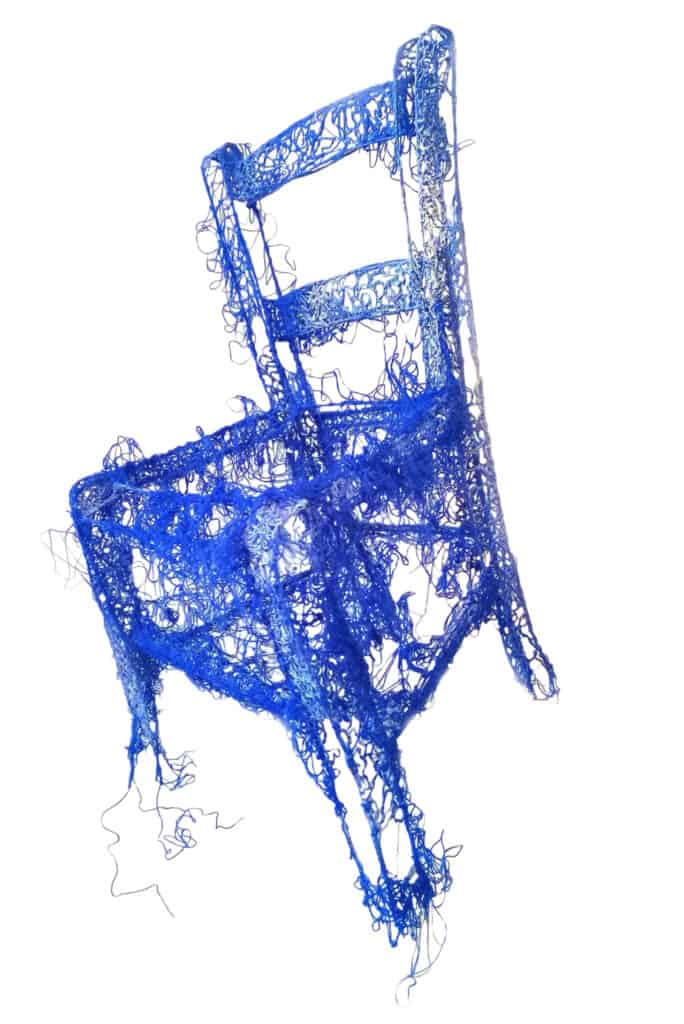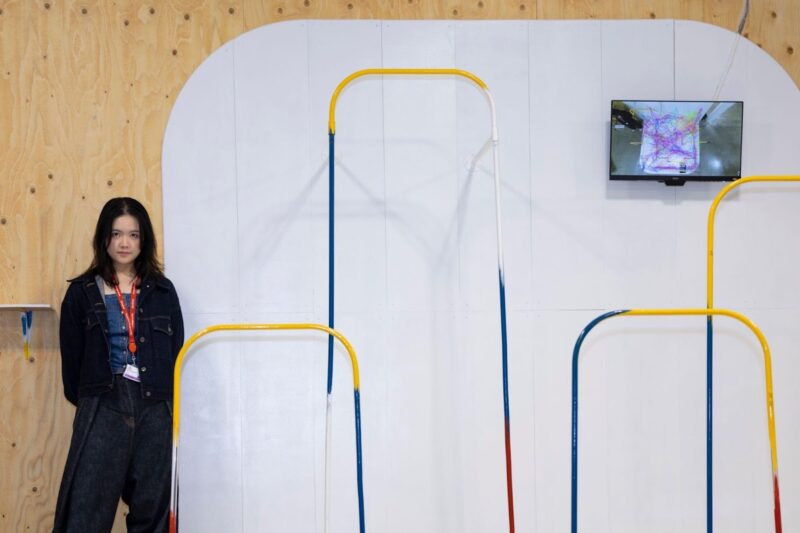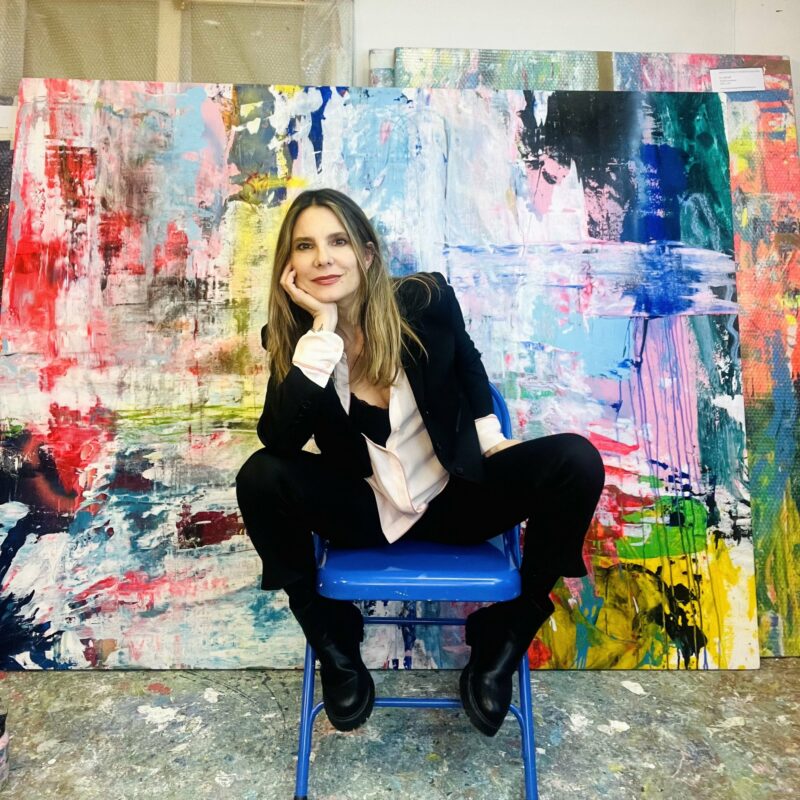I met with Riccardo Antonio Leone to get to the heart of his art, an intense creative process which brought salvation to the artist. Leone is a young Italian painter and sculptor whose artistic expression comes from an inner need to ‘extract beauty from pain’, to transform negative energies into a creative force. As the artist states in this interview, art became the ‘desperate, but also vital and energetic, attempt to cling to the threads — the lines of the drawings — in order to return to life.’
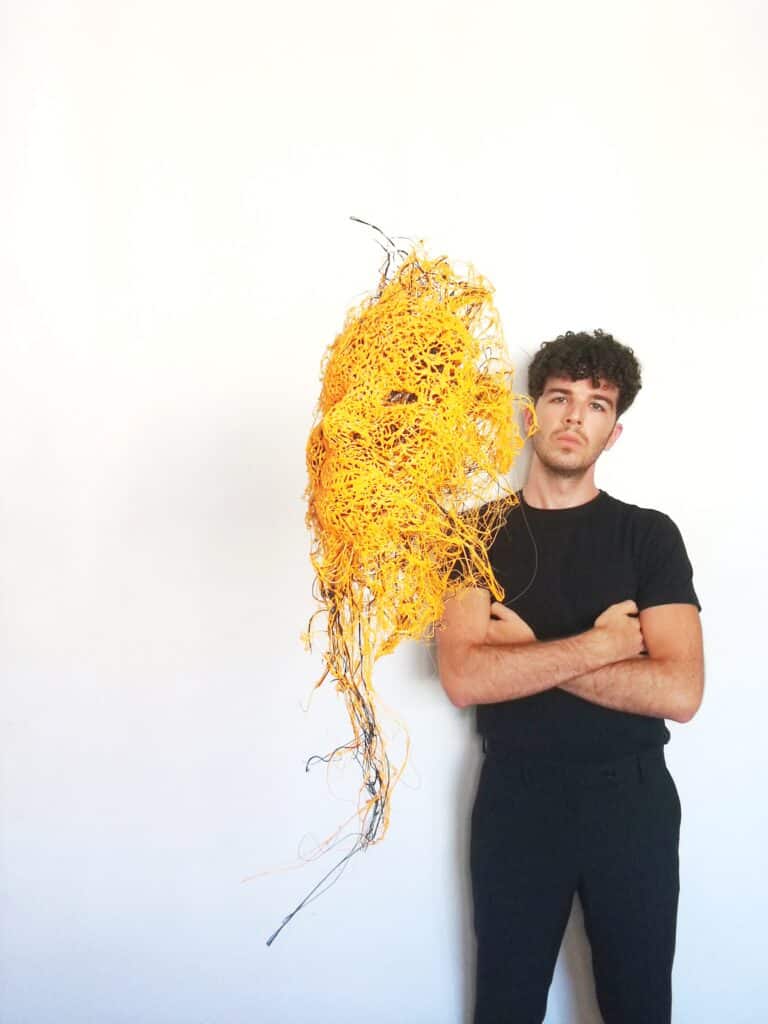
You studied Cultural Tourism Planning and Management in Padova, so you didn’t train in an Art School. What pushed you to become an artist?
Making art stemmed from my need for salvation. Isolation, loss of relationships, silence, emptiness, lack of emotions, not communicating for years and the risk of suicide are the foundations from which my art stands. It was a desperate, but also vital and energetic, attempt to cling to the threads — the lines of the drawings — in order to return to life. Art represented a way to affirm myself, to extract beauty from pain; something no one had ever wanted to see inside of me. It worked as a sort of redemption, a path of resilience to transform and shape the negative into the positive. At the point where either you succumb or change, art was my survival.
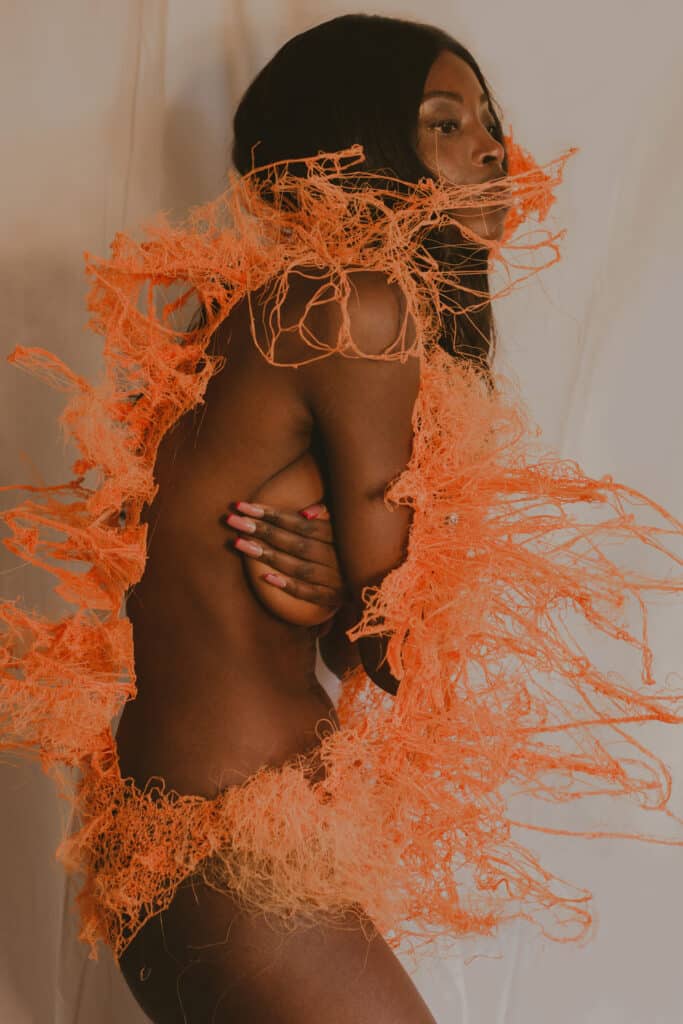
Your works stem from autobiographical references, becoming, therefore, extremely intimate. How do you express your inner feelings through art?
I work through the element of the line. The line is the maximum form in the smallest matter; it is the essence. As a constantly evolving dancing form, it is contemporaneously destructive, energetic, vital, tormented, delicate, violent chaos. I use all of my energy, both mental and physical, to give order to this tangle, to allow a shape to this flow. But, above all, my work is characterised by an extremely autobiographical line — it separates life from death, or better, the risks of suicide; it transforms it into resilience. This, of course, comes at a cost; it’s like making a pact with t he devil, there is no freedom without condemnation.
Why did you decide to create sculptures out of a 3D pen? What is the most attractive aspect of using this technique?
The 3D pen represents, perhaps, the most innovative and revolutionary tool to date in contemporary art. It allows you to draw suspended in the air and create immediate three-dimensional structures, as well as emphasising the power of the creative gesture making it a transport in the eyes of the beholder. It is hypnotic. The origins of my artistic path come from the ’embroidery of the soul’, 500/600 drawings on paper made with a BIC pen. I eventually let go of the BIC pen to start practicing using a 3D pen, which meant going from the two-dimensional to the three-dimensional, from drawings to an art that works at 360º, from an inner need to a more specific research, from person to artist.
Can you tell us about the creative process behind your works?
The works I do with the 3D pen are a very slow process by virtue of the fact that the extruded material or recycled plastic is 1 mm thick. Therefore, the construction of solid structures, especially when it comes to installations for open places, requires a considerable amount of time. Mins is a work of weaving and intertwining lines formed by micro-details, adding matter rather than removing it.
I know you are very concerned with the idea of the ‘fifth dimension’, both historically and in a more intimate way. What does it mean to you?
I focus predominantly on two aspects. Firstly, I transform BIC pen drawings into three-dimensional works. Afterwards, I focus on the fifth dimension which is central to my oeuvre, as it allows me to work with space. It’s not only about being able to draw suspended in the air, but about overcoming Space and Time, entering another dimension, going beyond. This happens through a flow that comes from an innate need to express myself, as well as a techno-sound that facilitates the process. It’s both a physical and a mental transport — my body trembles and I reach a sublimation, able to free the unconscious in the creative act. This transversing of space and time through the fifth dimension doesn’t serve me to reach a goal but to stay in the flow of things… it’s an eternal becoming.
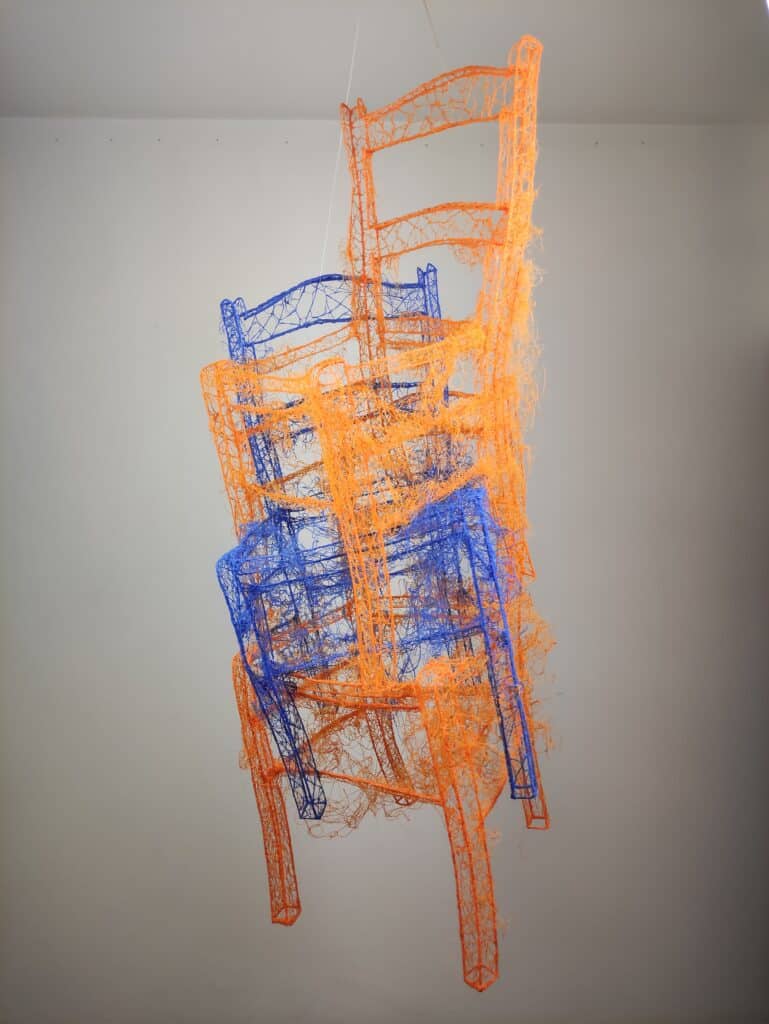
There is a continuous play between fragility and permanence, both in the materials you use, and the thin lines you draw in the air. How do you see your work?
The Wave. What I am going to create during the performance is a fluid that, by its nature, is in constant evolution. It doesn’t have a definitive form, it’s more of an abstract fluid where lines keep interweaving, creating a labyrinth of full and empty spaces. This sort of airy coral also encapsulates a series of contrasts between the single line and the line that, overlapping others, becomes matter. The fluid is part of the individual — body fluids that are traced back to essential forms of body regulation, whether they are sexual impulses or physical regulation, it is an inner need to expel, enjoy and release.
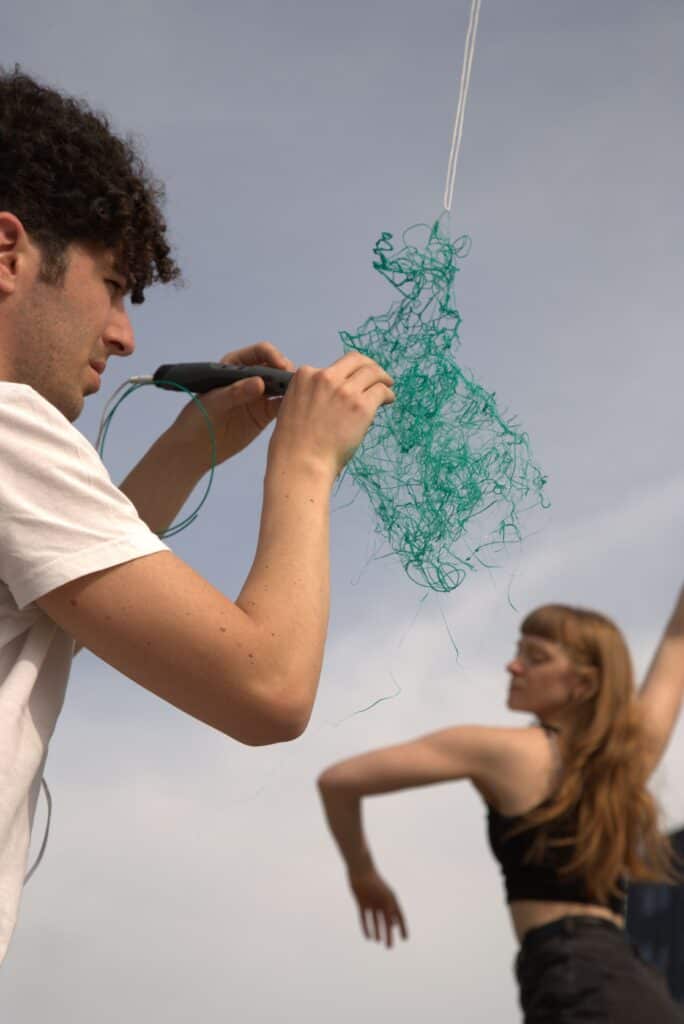
Your last performance created a sort of synaesthesia bringing together sound, space, matter, bodily and sculptural movement. Why did you decide to integrate such elements in your 3d work?
Integrating art and dance is actually the movement that unites these two areas and allows you to experience space and time. The relationship between the artist and the dancer is given by the fact of being able to get into flow and therefore into the fifth dimension and being able to draw the ballerina’s dance movements in addition to my feeling. It is not about choreography, entertainment or commercial shows but a creative process that aims to go deeper, also considering the motivations that led me to create.
While your works usually start from specific physical references, they tend to become quite abstract, with neither a precise beginning, nor an ending. How important is it to have this continuous flow?
What I create is a living work, by virtue of the fact that there is no beginning or end in the fifth dimension, the lines are like roots of a tree could expand to infinity, therefore the work on display must be installed as a suspended music box but that it can continue to rotate maintaining the flow and remaining in the fifth dimension in which it was created, therefore a fluid in continuous motion.

